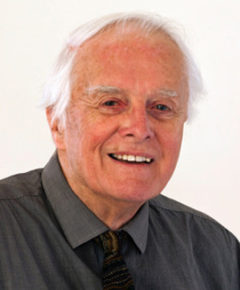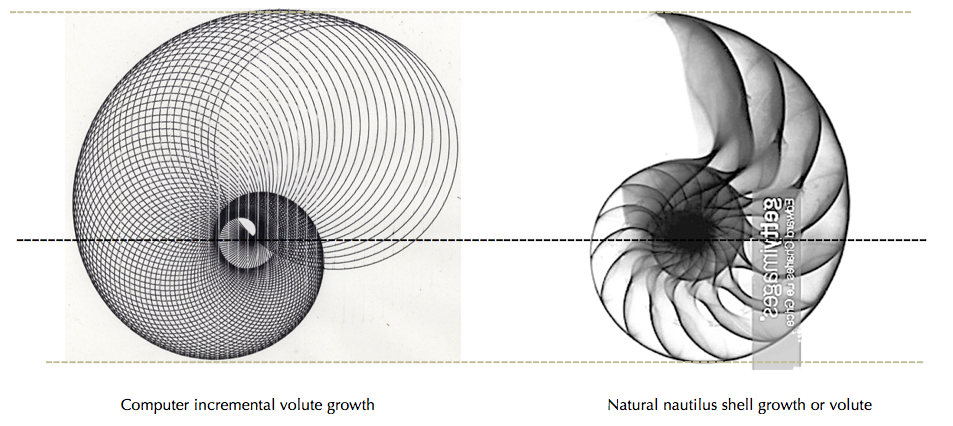It doesn’t require too much imagination to see that the joint use of these two volutes could easily have been the origin of the Greek Ionic capital on top of the fluted column – it is a common theory.
During the course of my design career I have often been surprised and dismayed at the general ignorance displayed by many educated people who have misunderstood the meaning of design and its fundamental role in all our lives.
Over many years, starting probably around the 1960s, I have written lectures about design as it has applied to many areas of our daily lives. It is an enormous topic, being a fundamental element of everything we do from the moment we open our eyes for the first time every morning – or even before then as consciousness and thinking overtakes sleep.
I have come to believe that it is even more fundamental to our thinking, behaviour and wellbeing than literacy and numeracy are – the two latter topics (albeit important as they are) being used more as tools for accurate communication and calculation.
The genesis of my Design for Living courses probably started during my early teaching years at the School of Architecture, firstly under Sydney Technical College, then University of Technology and finally at the University of New South Wales at Kensington, NSW.
While architecture was my prime motivator I must have realised quite early that it was really a subset of a much wider human philosophy of the design of everything – initially of natural things where growth was a vital factor and subsequently by humans. Others, such as Abercrombie and Dawkins have written at length on growth and form and indeed the Duke of Edinburgh who came out with his famous phrase :
“Everything that hasn’t been designed by God has been designed by a human being”.
There is indeed, something mysterious or magical in the geometry and mathematics of natural growth forms and there are many unexplained similarities in forms designed by humans. These intrigued me to the point of trying to explain to non-designers how the multitude of human designed forms came about, their structures, fitness for purpose, beauty, proportion and the incredible geometrical similarities which have been discovered.
My first series of lectures on design were assembled when I was teaching design to 1st and 2nd year architectural students to help them understand the close relationships between the elements of art and the more pragmatic principles of design.
I subsequently (in Canberra) formulated my thoughts more formally as an in-service course for secondary teachers of art and industrial arts (now Design and Technology) to encourage collaboration between both subjects because design is really the natural linkage – but was rarely if ever mentioned by either.
In the early 1970s I produced a film strip ‘What is good design’ and it was bought by the NSW Dept. of Education, but I never heard of its promotion or use. That was my first publication based on my researches into design theory.
My second series on the theme of “Design for Living” was developed further as a course for members of University of the Third Age and ran for at least 20 weeks around 1990, 1991 and 1992. It was, as might be expected – an elderly audience and extremely popular and was repeated twice in subsequent years – a little bit more being added every time. Preparing what to say and selecting the most appropriate slides took a large slice of my life and I found it to be very exhausting – but very rewarding. In retrospect the lectures would be good material for a book.
My final analysis of the U3A talks was that it would be better to address young people rather than those at the end of their lives. In that way what I had to say could be beneficially applied for many years – to the U3A members it was challenging their long held beliefs – with little personal time left for change and benefit to meet the needs of the future eg, climate change and its effects on architectural design.
However, toward the end of my last course at U3A (1996) I had written a booklet on “The magic of growth – and design” (see Portfolio Publications – this segment) to explain the mathematical and visual relationships which exist between natural growth (see illustration above), architectural design, the Fibonacci series of numbers and paper sizes – I thought it to be a quite revealing publication.
If I am spared the time I now feel (2016) that all this lecture material should be collated into a book on Design for Living, but here I find myself on the horns of a dilemma – my hours of sitting at the computer over the last 26 years are taking their toll of my personal abilities, particularly my sight and use of my legs. All will be finally revealed.
The many lectures given in these courses have not yet been collected and catalogued – they await investigation in cardboard boxes in my worlshop…..
See also Vol 2 – an associated portfolio of my written words for the actual lectures which I believe could be made public as a book or a lecture series aimed at secondary schools.


